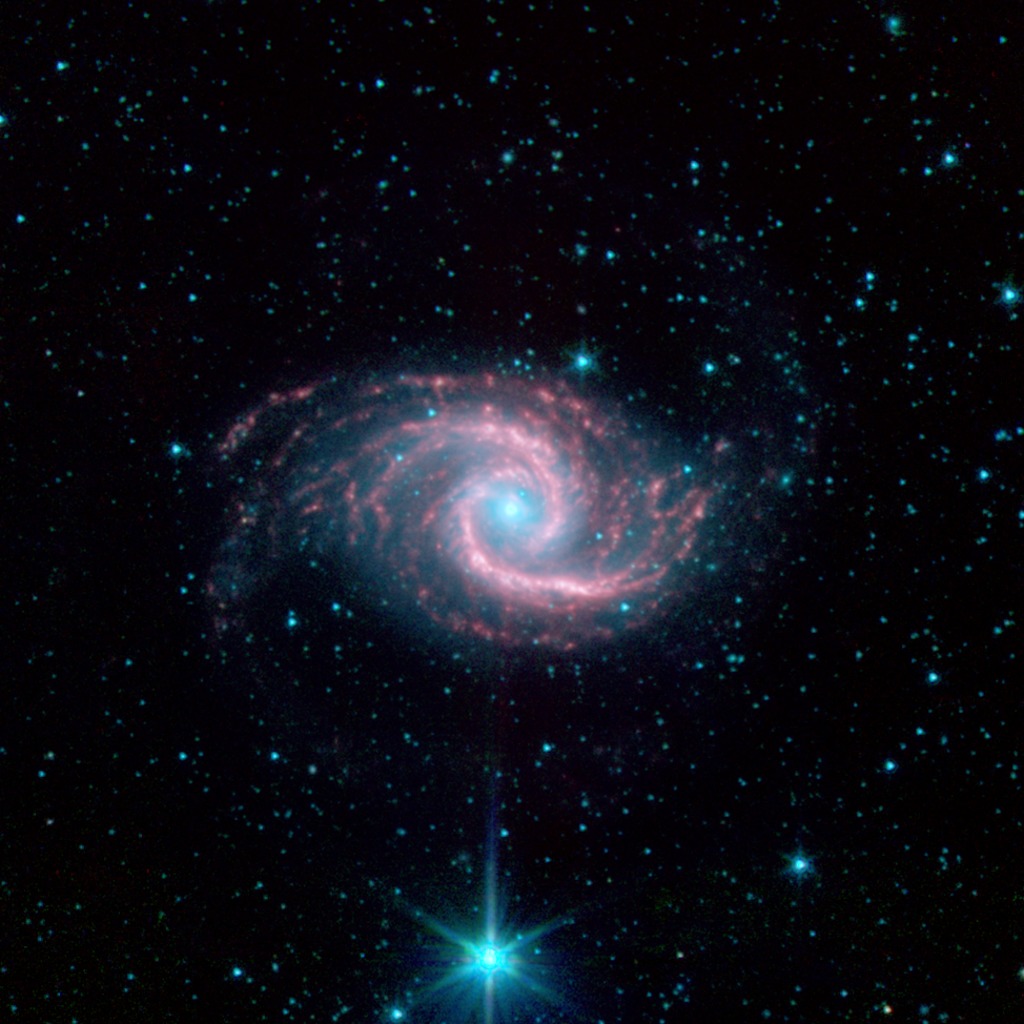
Credit: NASA/JPL-Caltech/R. Kennicutt (University of Arizona) and the SINGS Team
Observation • September 15th, 2005 • sig05-013
sig05-013
This beautiful spiral galaxy NGC 1566, located approximately 60 million light-years away in the constellation Dorado was captured by the Spitzer Infrared Nearby Galaxies Survey (SINGS) Legacy Project using the telescope's Infrared Array Camera (IRAC).
The faint blue light is coming from mature stars, while the "glowing" red spiral arms indicate active star formation and dust emission. Much of the active star formation is seen in the two symmetric arms that are reminiscent of other grand design spirals such as the Whirlpool galaxy. The small and very luminous blue nucleus suggests that this is a Seyfert galaxy (a galaxy that is actively emitting radiation from a very small region in its core).
The SINGS image is a four-channel color composite, where blue indicates emission at 3.6 microns, green corresponds to 4.5 microns, and red to 5.8 and 8.0 microns. The contribution from starlight (measured at 3.6 microns) in this picture has been subtracted from the 5.8 and 8 micron images to enhance the visibility of the dust features.
About the Object
- Name
- NGC 1566
- Type
- Galaxy > Type > Spiral
- Galaxy > Activity > Starburst
- Distance
- 60,000,000 Light Years
- Redshift
- 0.005017
Color Mapping
| Band | Wavelength | Telescope |
| Infrared | 3.6 µm | Spitzer IRAC |
| Infrared | 4.5 µm | Spitzer IRAC |
| Infrared | 5.8 µm | Spitzer IRAC |
| Infrared | 8.0 µm | Spitzer IRAC |
Astrometrics
- Position (J2000)
- RA =4h 20m 16.7s
- Dec = -54° 55' 55.1"
- Field of View
- 12.2 x 12.2 arcminutes
- Orientation
- North is 124.2° right of vertical



